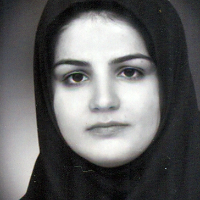Determining the Unit Cost of Outpatient Rehabilitation Services in the Nezam-Mafi Rehabilitation Center in Tehran, Iran Using the Time-driven Activity-based Costing Method
One of the basic challenges of health care centers is the inflation of the costs of services. Rehabilitation services play a significant role in restoring disabled people's functional ability. Having knowledge of the unit cost of rehabilitation services can be useful in optimal allocation of resources and budget. This study aims to calculate the unit cost of outpatient rehabilitation services provided by the Nezam-Mafi Rehabilitation Center (NMRC) in Tehran, Iran.
This is a descriptive, retrospective study with a cross-sectional design. The time-driven activity-based costing (TDABC) method was used to determine the unit cost for 9 outpatient rehabilitation services related to speech therapy, occupational therapy, physiotherapy and audiology provided by the NMRC in 2019. In the first step, the sequence of each activity was mapped in one code (service). Then, the resources needed to perform each activity were identified and the source of cost for each activity was specified. In the next step, the cost driver for each specific sources and the amount of their use in each activity were determined. Due to the importance of personnel costs, this stage was done with more attention on the time required to provide each activity. In this regard, the cost of each minute of service compensation was calculated by considering the annual attendance time of personnel and their salary expenses. Finally, the costs of each unit of the production factor and the total cost for each code (service) were determined.
In the NMRC, the costs of renting (47.9%), consumable materials and supplies (11.6%), and contracted services (10.5%) made up the highest percentage of costs. The costs of outpatient rehabilitation services (except for speech therapy) were higher than official tariffs for these services. The cost of specialized personnel for physiotherapy services and the cost of building in occupational therapy, speech therapy, and audiology services had the highest share in their unit costs. The total cost of staff personnel was estimated at 3.904 Rials per minute (RPM), which was higher than the specialized professional for pediatric occupational therapy (2046 RPM), occupational therapy (1929 RPM), speech therapy (1899 RPM), and audiology (1974 RPM). The high overhead costs of outpatient rehabilitation services (24.5% of the total cost( were one of the primary reasons for the gap between the average costs and tariffs.
There is a considerable gap between the cost of some services in the NMRC and the related tariffs. Due to the low capacity of service provision in the NMRC, overhead costs have led to the inflation of the cost of services in this center. Therefore, the consolidation of small institutions and improving the referral system for people with disabilities from medical centers can reduce the unit cost of services. Considering that most rehabilitation services are not covered by the social security insurance and are not affordable for patients, a national-level reform should be prepared in the healthcare system. In addition, using the TDABC method in rehabilitation service centers can be a solution to identify the main sources of costs and control price inflation in the health sectors.
-
The Prevalence of Depression Among Students with Nursing Major in Iran Using the Beck Questionnaire: A Systematic Review and Meta-Analysis
Parvaneh Isfahani, Mohammad Sarani, Somayeh Samani, Aliyeh Bazi, Seyedeh Masoumeh Hosseini Zare, Ahmad Siar Sadr, Maryam Sadat Hosseini, *
Iranian Journal of Epidemiology, -
Evaluating the Causes of Deductions for Inpatient Bills Covered by Social Security Insurance in Rofeideh Hospital, Tehran City, Iran, in 2021
, Jafar Babapour, Mehdi Basakha, Seyed Mahdi Mohsenzadeh, Parvaneh Esfahani, Seyedeh Masoumeh Hosseini Zare, Najmeh Ashouri, Bijan Khorasani*
Archives of Rehabilitation,



